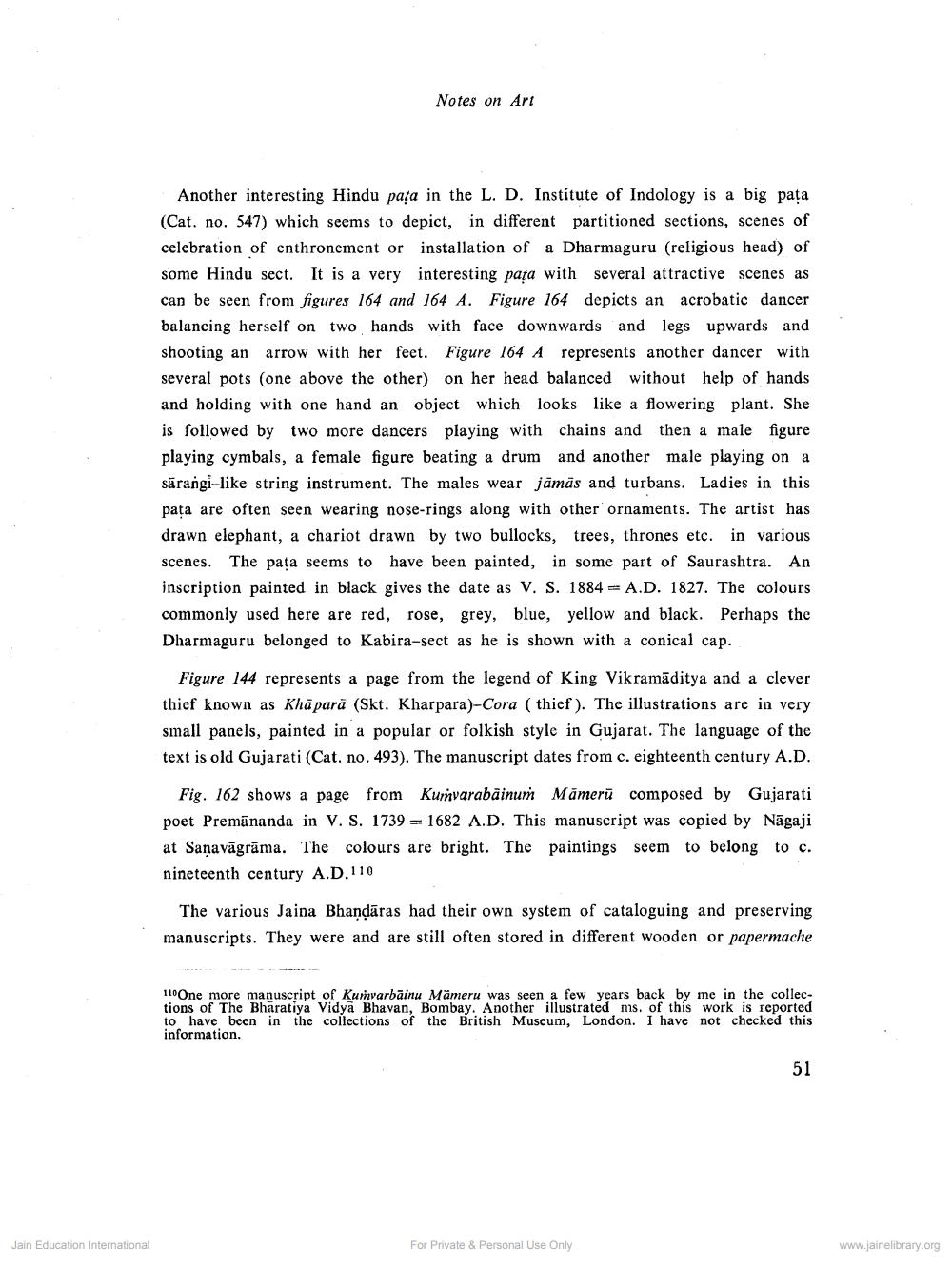________________
Notes on Art
Another interesting Hindu pața in the L. D. Institute of Indology is a big pata (Cat. no. 547) which seems to depict, in different partitioned sections, scenes of celebration of enthronement or installation of a Dharmaguru (religious head) of some Hindu sect. It is a very interesting pața with several attractive scenes as can be seen from figures 164 and 164 A. Figure 164 depicts an acrobatic dancer balancing herself on two hands with face downwards and legs upwards and shooting an arrow with her feet. Figure 164 A represents another dancer with several pots (one above the other) on her head balanced without help of hands and holding with one hand an object which looks like a flowering plant. She is followed by two more dancers playing with chains and then a male figure playing cymbals, a female figure beating a drum and another male playing on a sārangi-like string instrument. The males wear jāmās and turbans. Ladies in this pata are often seen wearing nose-rings along with other ornaments. The artist has drawn elephant, a chariot drawn by two bullocks, trees, thrones etc. in various scenes. The pata seems to have been painted, in some part of Saurashtra. An inscription painted in black gives the date as V. S. 1884 = A.D. 1827. The colours commonly used here are red, rose, grey, blue, yellow and black. Perhaps the Dharmaguru belonged to Kabira-sect as he is shown with a conical cap.
Figure 144 represents a page from the legend of King Vikramāditya and a clever thief known as Khāparā (Skt. Kharpara)-Cora ( thief). The illustrations are in very small panels, painted in a popular or folkish style in Gujarat. The language of the text is old Gujarati (Cat. no. 493). The manuscript dates from c. eighteenth century A.D.
Fig. 162 shows a page from Kurvarabăinum Mamerū composed by Gujarati poet Premānanda in V. S. 1739 = 1682 A.D. This manuscript was copied by Nāgaji at Sanavāgrāma. The colours are bright. The paintings seem to belong to c. nineteenth century A.D. 110
The various Jaina Bhandāras had their own system of cataloguing and preserving manuscripts. They were and are still often stored in different wooden or papermache
110 One more manuscript of Kurvarbāinu Mämeru was seen a few years back by me in the collections of The Bharatiya Vidya Bhavan, Bombay. Another illustrated ms. of this work is reported to have been in the collections of the British Museum, London. I have not checked this information.
51
Jain Education International
For Private & Personal Use Only
www.jainelibrary.org




